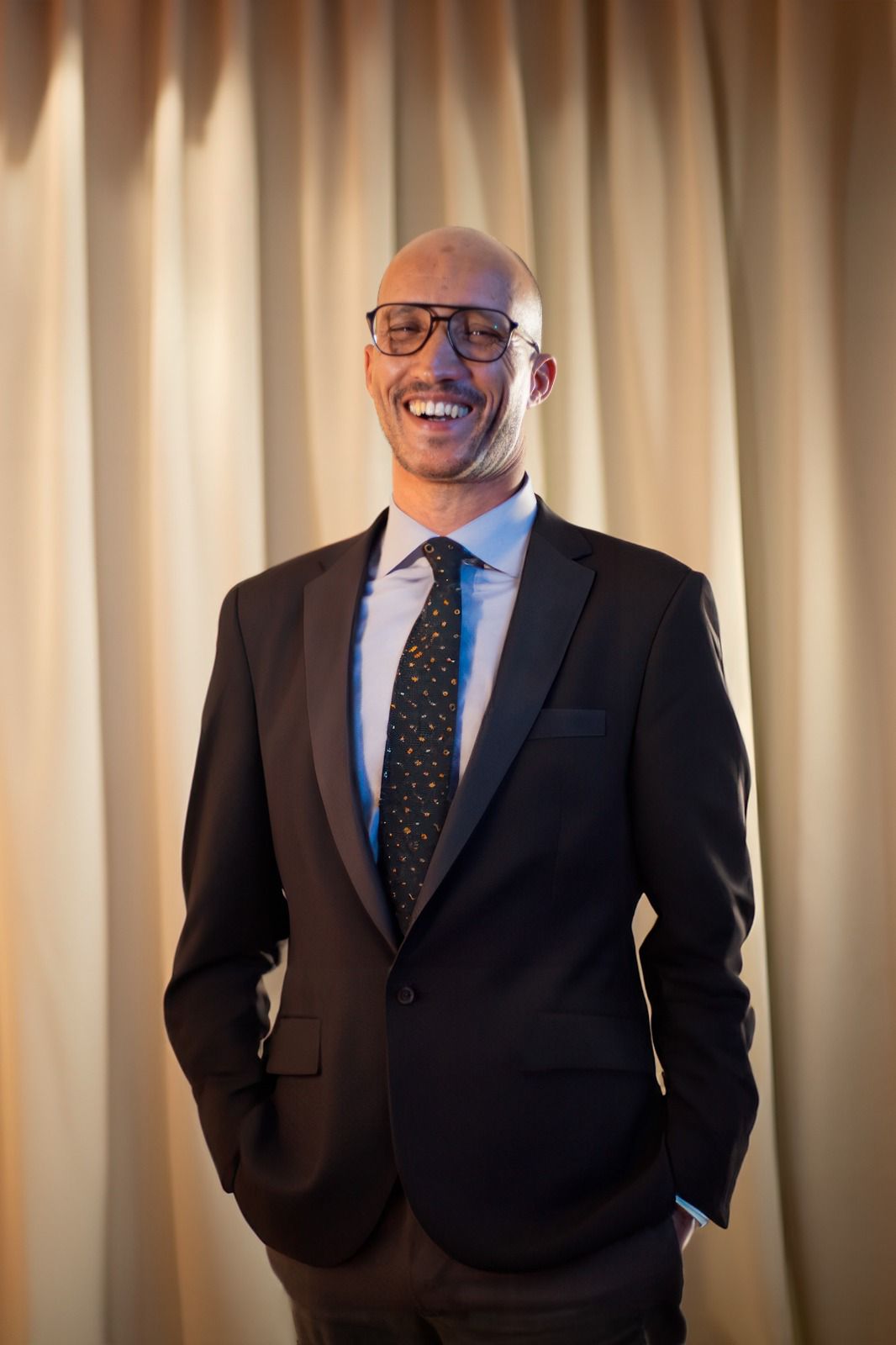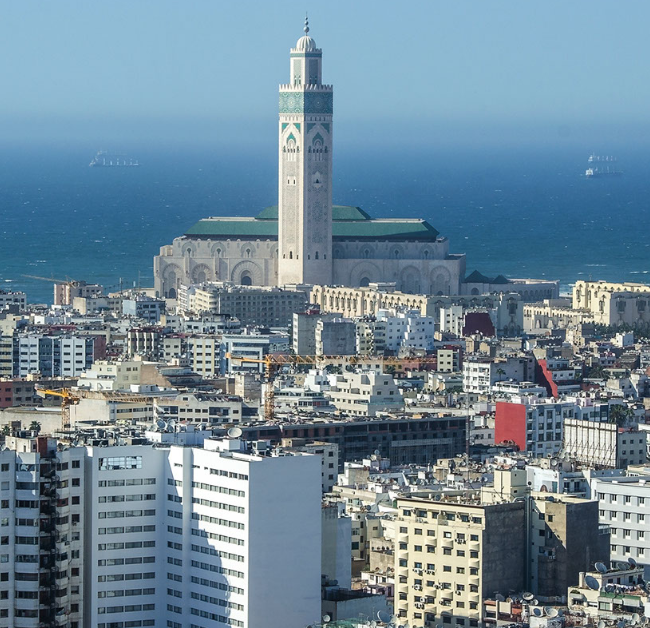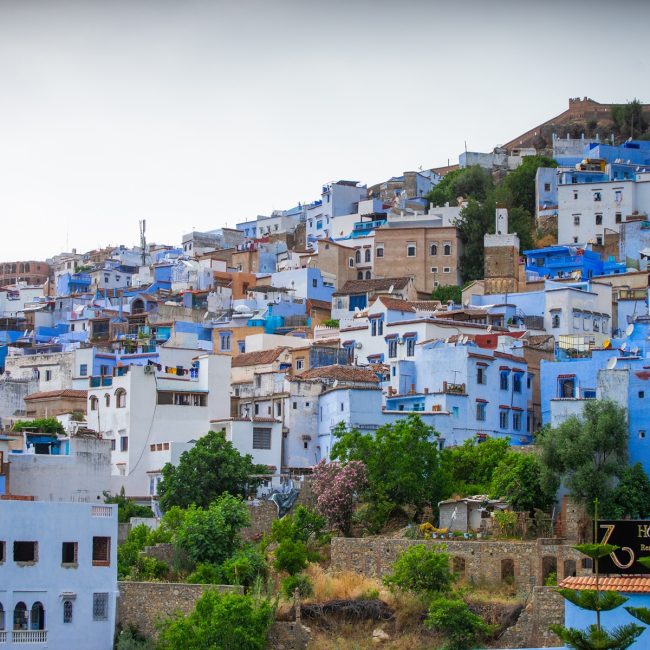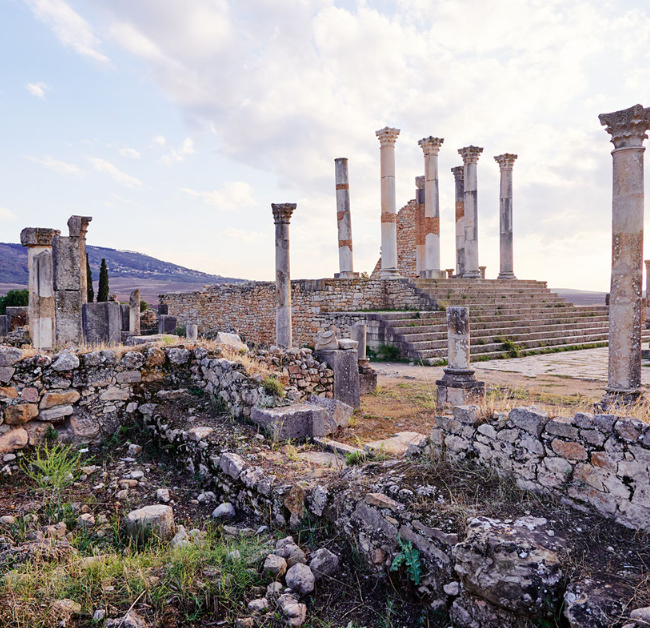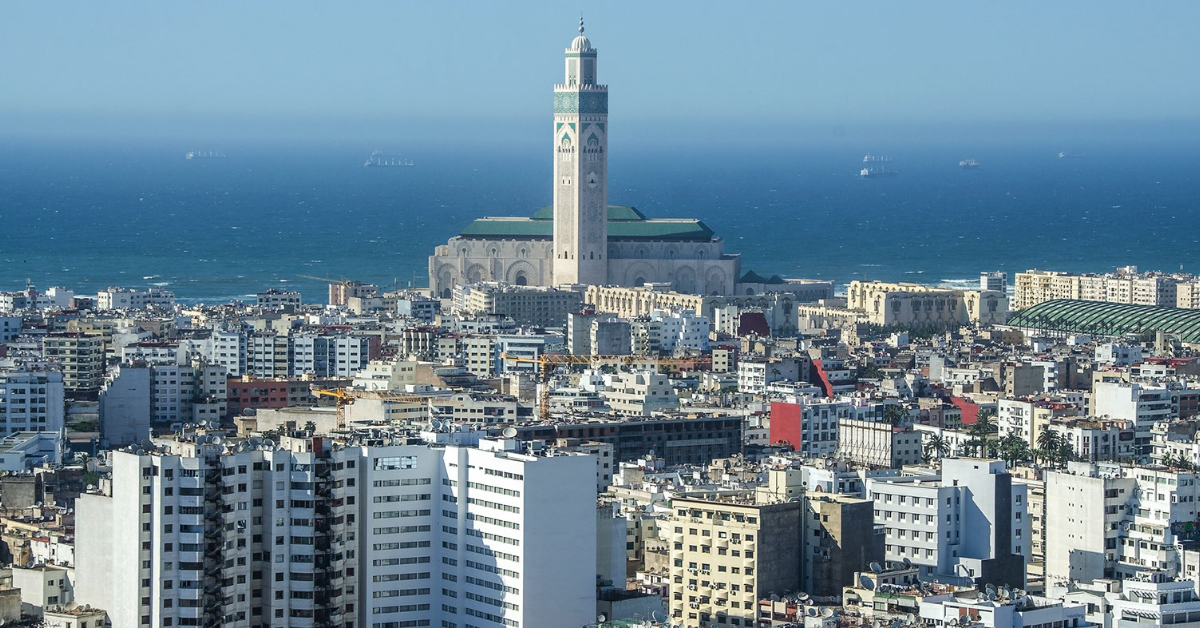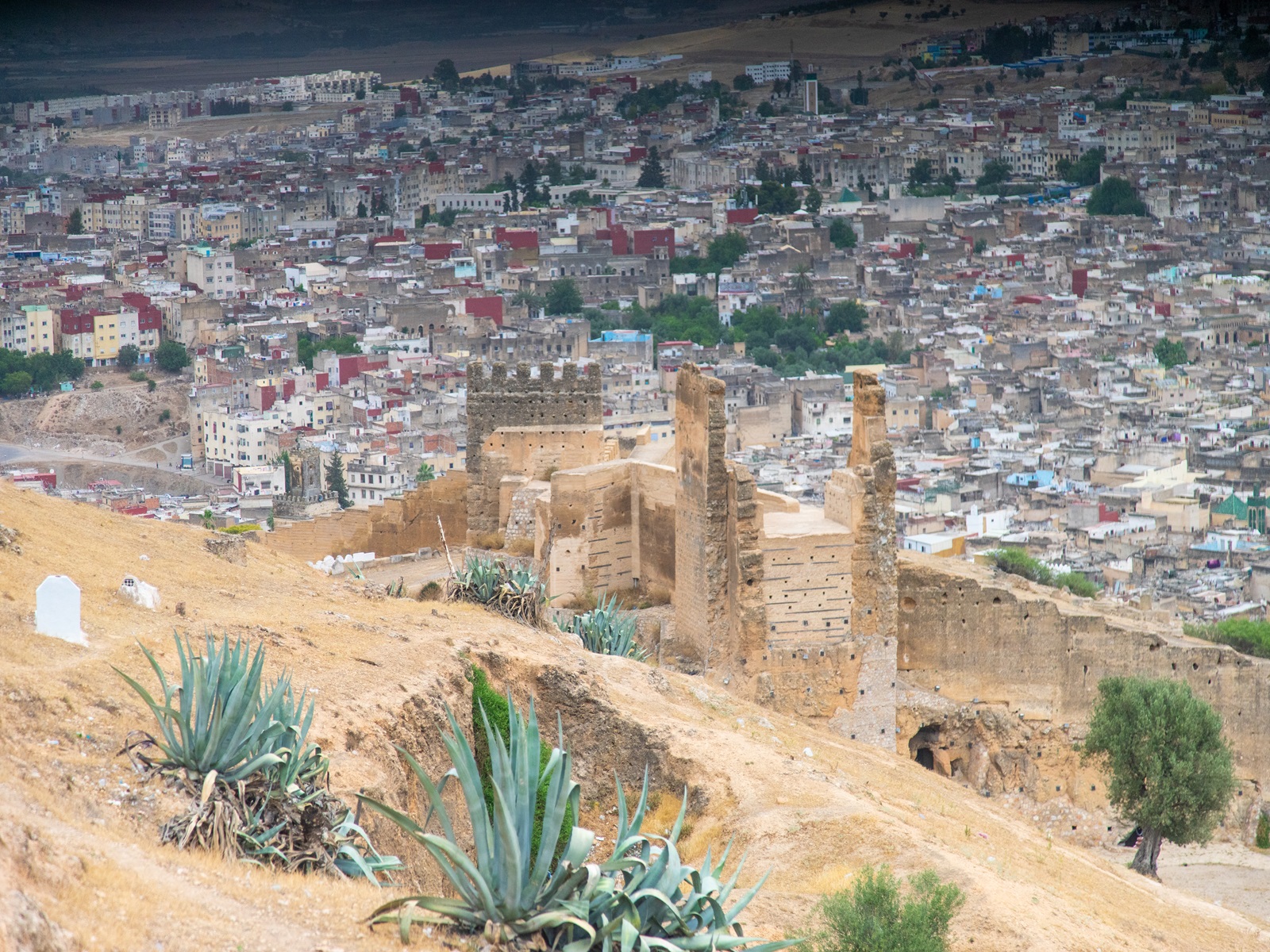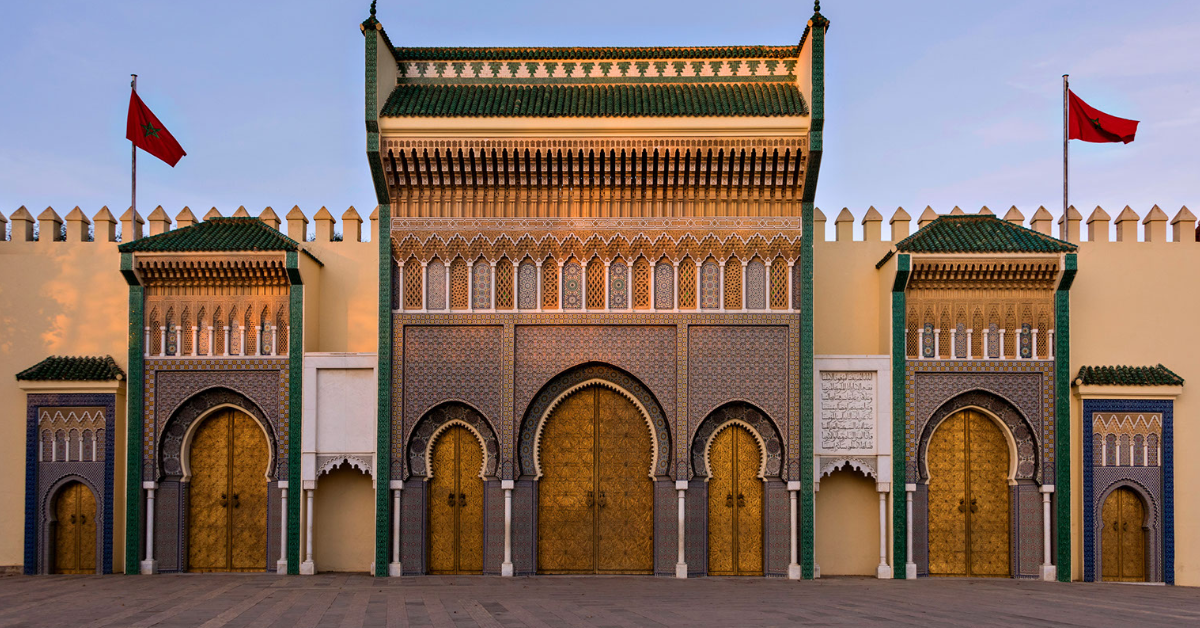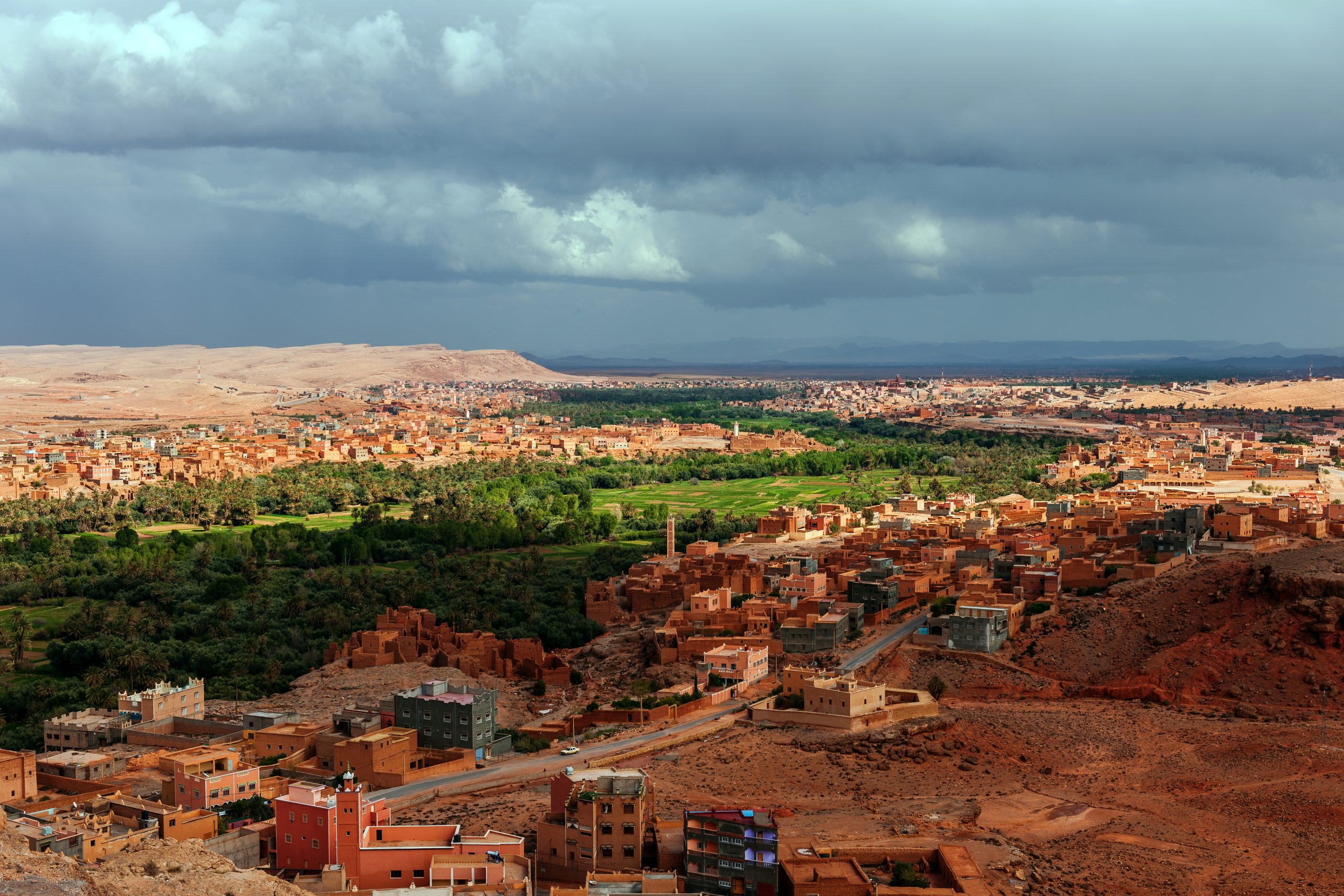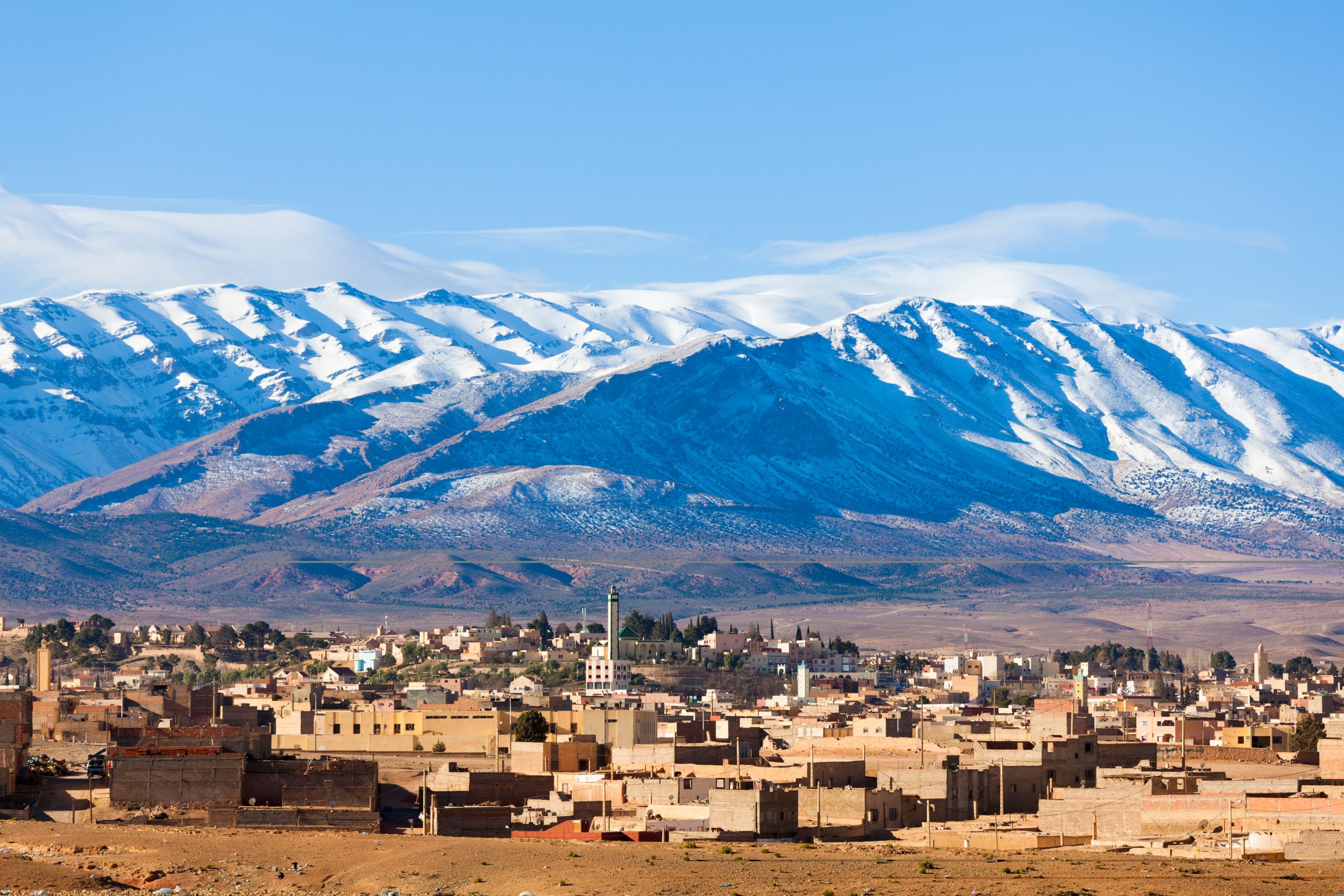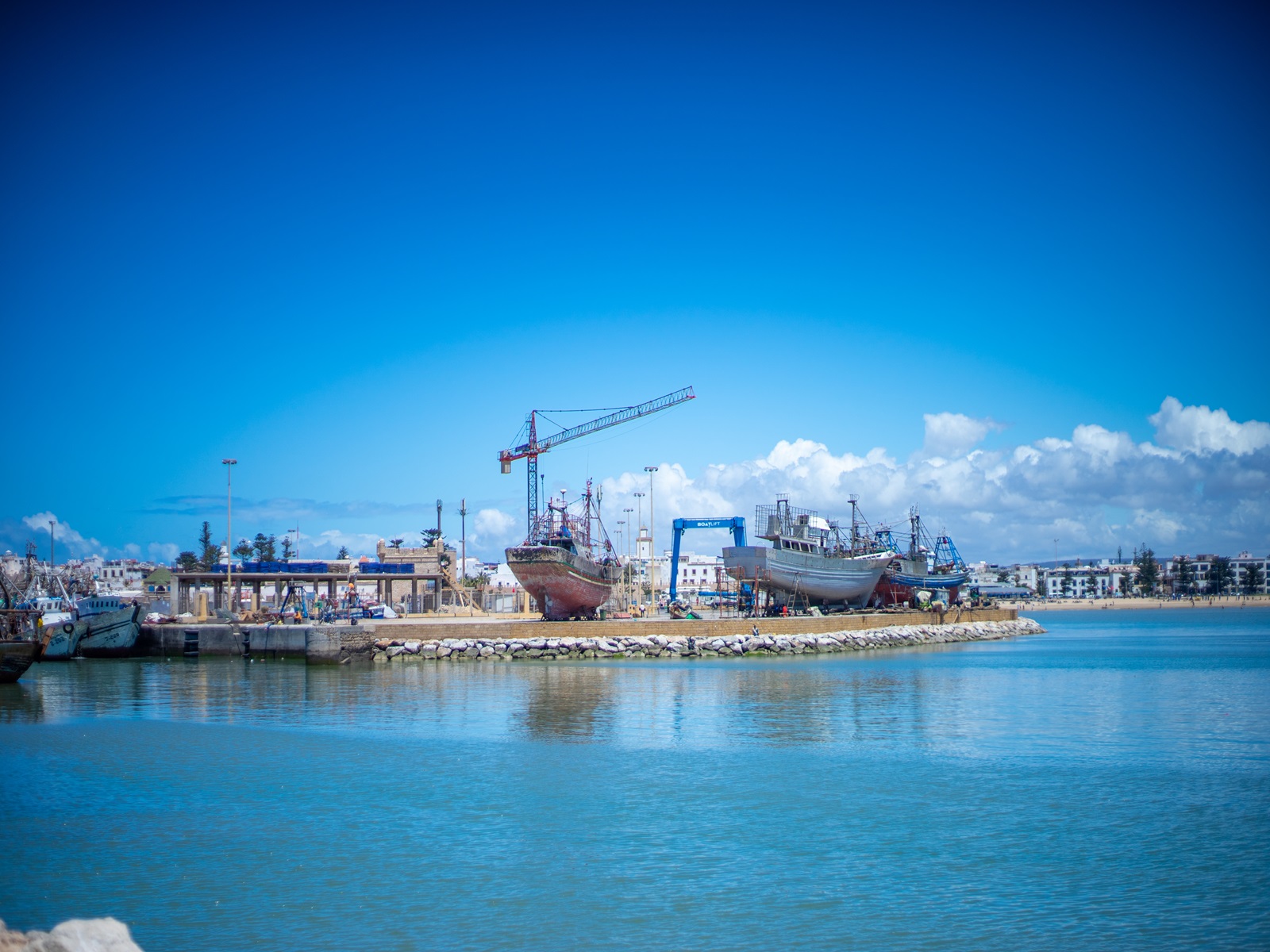Morocco Wonders: Medinas & Kasbahs 10-Day Tour
Morocco Wonders: Medinas & Kasbahs 10-Day Tour
A Moroccan tour is an abundance of everything – culture, food, shopping, and sightseeing across varied landscapes. Even in landscapes, you have a plethora of choices right from towns situated on the Atlantic Ocean and the Mediterranean Sea to sand dunes in the deserts of the Sahara.
Morocco is equally revered for its food as it is for its sightseeing. Mint teas, local bakeries, handmade cakes, native delicacies, and roadside stalls in the souks are the order of the day.
And no Moroccan trip is complete without shopping at the souks. Right from colorful embroideries to subtler and sober souvenir items, Morocco is a place that will make you go back with loads of goodies and memories.
Your Moroccan tour will be filled with exquisite sights and sounds, meeting with the native artisans, camping under the stars, and shopping with local craftsmen.
Departure
CasablancaDeparture Time
Depends on your flight timeReturn Time
Depends on your return flight timeIncluded
Camel trek (one camel per guest)Entrance FeesMeals as per itineraryNew air-conditioned vehicle 4WD or Minivan/Mini BusOvernight in Desert Luxury CampPick-up and Drop Off ServiceProfessional driver/Tour guide during the tourNot Included
FlightsLocal guides in major cities: Fes; Marrakech, Casablanca mosque, Volubilis; Essaouira, Atlas MountainsLunches and drinks unless specifiedPersonal expenses
Tour Plan
Day 1: Casablanca Arrival
Day 2: Casablanca to Fez
Get a guided tour of Morocco’s largest and Africa’s second-largest mosque, Hassan II. After this, you will be driven to Fez and will pass the cities of Meknes and Volubilis on the way. in Meknes, you will visit the historical sites such as the Royal stables, the Moulay Ismail Mausoleum, the beautiful gate Bab El Mansour, and the Mederssa Al Bouaanania, After Lunch, we will head to explore the ruins of the Roman empire in north Africa the archeological site of Volubilis, after visiting Volubilis we will continue our journey towards Fes for an Overnight.
Day 3: Exploring Fez
Today is the first of two half-day tours of Fez with your private guide, who will help you explore the winding streets of the medina as well as give you a full history of the city.
Despite the modernization, what will enchant you is the old-world architecture that still prevails in different parts of the city. There are wonderfully designed mosques such as MedersaBouInania and Medersa el-Attarine, that even though don’t open their door to non-Muslims, can be seen from outside. The complexly done tile work is an absolute artistic delight.
The King’s Palace, Saadian Tombs, and Jewish quarters are other well-known places of interest that one can explore. The King’s Palace is open only to the members of the Royal family. Others can enjoy viewing it from the outside. Another noteworthy thing is that the city is full of fountains, just like important kingdom cities used to be way back in time. And given that it is still traditional, both men and women should cover themselves well when they are exploring the city.
Contrary to what the world believes, the world’s oldest university is not anywhere else but at Fez. The University of Al-Qarawiyyin is supposed to have been established in 859 AD, and UNESCO granted it heritage status. There are so many more places to visit in Fez, such as the ancient tanneries, and the colorful bazaars. Make sure you are carrying your camera along!
The rest of the afternoon is at leisure.Day 4: Fes to Chefchaouen
Today with your driver/guide you will take a full day trip to explore the blue town and the pearl of the north, the city of Chefchaouen which still attracts tourists from all over the world, during this day trip to Chefchaouen from Fes you will explore the picturesque blue-washed alleys of Chefchaouen is the main city in the Rif Mountain region in the north of Morocco and is undoubtedly one of the prettiest towns in the country.
The city is dramatically situated, with blue and whitewashed buildings perching on the mountainside and small steep alleys, paths, and stairways winding around the tightly packed old medina. It remained a bastion against European influence until 1920 when the first Christians were allowed to enter, and the town retains a strong Arabic and Andalusian feel, with traditional wrought iron and beautifully woven lamps. Chefchaouen is a relaxed and tranquil town with a rather bohemian feel and is a perfect antidote to many of the larger cities in Morocco, with superb views of the surrounding countryside.
Day 5: Fez to Merzouga Desert
Today, you can explore the town of Ifran and meet the Barbary apes at the Cedar forest in Azrou further. You can take a journey uphill into the Middle and High Atlas Mountains stay overnight in the Sahara Desert, and enjoy the Caravan Trails at one of the greatest sights of Morocco.
The Erg Chebbi are the most accessible dunes of the Sahara in Morocco. The best times to see them are at sunrise and sunset, when the changing light subtly alters their color with each passing second, from butter yellow to gold, ochre, and honey. A night camping in the desert is a special experience; the deep tranquillity seemingly a million miles away from Morocco’s hectic cities, and the perfect, clear night skies displaying a vast curtain of stars
Day 6: Merzouga desert – Dades Valley – Ouarzazate
The driver will pick you up in the morning and visit the city of Ouarzazate which is also known as ‘the door of the desert’ and is the gateway to the Sahara Desert.
Ouarzazate boasts a significant role in the history of the south of Morocco, lying as it does at the confluence of the three major southern oasis valleys – the Draa, the Dades, and the Ouarzazate. Extensive fortifications built by successive sultans trying to dominate and control this traditionally subversive region have come and gone, the pisé walls washed away in sporadic rains. The only lasting impression has been left by the French, who made Ouarzazate their southern garrison town, laid out a grid of streets, and built modern buildings to line them. There are, however, a couple of well-preserved kasbahs in and around the town, and Ouarzazate is a great base for exploring the surrounding scenery: steep desert valleys filled with palms, leading into rocky desert plains. Close to Ouarzazate lies the spectacular ancient ksar town of Ait Ben Haddou, an extraordinary example of traditional clay-brick dwellings in the foothills of the High Atlas Mountains.
Day 7: Ouarzazate – Kasbah ait ben haddou – Marrakesh
The first of the day will include a visit to the world heritage Kasbah Ait Ben Haddou, marked as a world heritage site since 1987 and a famous fortified village that still attracts various directors all over the world, many famous films were shot at this site such as; Gladiator, Mommy, Heaven, Games of Thrones, …,
where you will learn about the impact and historical relevance of this 17th-century Kasbah. After the visit we will head to Marrakech through the High Atlas Mountains, check in to your hotel in Marrakech where a half and can spend it leisurely, relaxing and strolling around one of the many beaches.Day 8: Explore Marrakech: Guided city tour
Full day dedicated to exploring the pearl of the south, the second imperial city of Morocco, enjoy the cultural heritage of Marrakech, and check out how local artisans produce Kaftan.
A lively, colorful city, Marrakesh is defined by its old medina and souqs, which lattice the center and resound with the hum of craftsmanship and the tantalizing aroma of exotic spices. At the heart of the medina is the Djemaa El Fna, an open space that comes alive at night with entertainers and soothsayers amid the food stalls. Over its turbulent history, the city has fallen in and out of favor with the ruling sultans, but its function as a trading place has continued regardless. Rising above this activity are proud reminders of the city’s past in the towering minarets, ornate tombs, and cavernous palaces. These are encircled by ochre ramparts, shaded beneath palms, and framed by the distant backdrop of the Atlas Mountains. Marrakesh’s many gardens offer a haven of tranquillity in this busy city. The best known of these is the Majorelle Garden, where vibrant plants surround a striking cobalt-blue Art Deco pavilion.
Day 9: Explore the artisans workshop in Medina
In the morning, Indulge in some Lamp Crafting under the eyes of local artisans, and feel how it is to live like a Marrakech native.
There is a huge range of crafts represented in distinct areas of the medina, including carved wood, embroidery, henna painting, calligraphy, ceramics, and copper. Wander the maze of souqs and you are likely to take home some great souvenirs. The stalls don’t seem to suffer from being situated amid a dozen competitors selling virtually identical spoils. Throughout the different souqs, you will quickly be able to identify the particular sights, sounds, and especially smells that are unique to each craft. Fez is best known for the production of leather goods at the iconic tanneries that
Day 10: Marrakech to Essaouira
Drive through the Expressway to reach the city of Essaouira, the old Portuguese capital, explore the picturesque markets, and visit the famous fish and seafood souk and the Jewish corner.
Essaouira is one of the prettiest and most relaxed towns in Morocco. Located on the Atlantic coast, it is surrounded by long stretches of beach, with wind and waves that have drawn the windsurfing and surfing communities here. They have perpetuated the laid-back atmosphere that grew in the town during the 1960s, when this undiscovered gem was a favorite retreat of artists and musicians, including Jimi Hendrix. The appeal of the town lies in the beautiful juxtaposition of the imposing Portuguese ramparts and the rolling surf of the Atlantic. At the heart of the town the harbor, fortified by the Portuguese, is home to a large fishing fleet that ensures Essaouira’s fish restaurants are amongst the best in the country. Essaouira is also famous for the woodcarving of local artisans, who sell their wares in souqs beneath the ramparts.
Day 11: Essaouira to Casablanca through Safi and El Jadida
Enjoy the scenic coastal drive with stunning views of the Atlantic Ocean as you head north. Your first stop will be in Safi, a town renowned for its pottery craftsmanship and ceramic production. Here, you can visit local artisans’ workshops, admire their intricate pottery designs, and perhaps pick up a few pieces as souvenirs. Safi is also famous for its old Kasbah and Cliffside views over the ocean.
Midday: El Jadida – UNESCO World Heritage Site
Continuing along the coast, you’ll arrive in the historic town of El Jadida, a former Portuguese settlement. El Jadida’s Portuguese Cistern and Fortified Medina are UNESCO World Heritage Sites that offer a glimpse into Morocco’s colonial past. Take a moment to explore the underground cistern with its iconic pillars and vaulted ceilings, then stroll along the fortified walls, which offer beautiful views over the Atlantic. You can enjoy a relaxed seafood lunch at a local restaurant by the shore before resuming your journey.
Afternoon: Scenic Drive to Casablanca
After lunch, embark on the final leg of your drive to Casablanca, Morocco’s largest city and economic hub. En route, you’ll pass through Azemmour, a small, picturesque town known for its peaceful riverside setting and vibrant street art. The town’s 16th-century medina is worth a quick stop if time allows.
Late Afternoon: Arrival in Casablanca
Upon reaching Casablanca in the late afternoon, you'll be welcomed by the city's modernity blended with historic charm. You can visit the iconic Hassan II Mosque, one of the world's largest and most impressive mosques, situated on the edge of the Atlantic Ocean. Its intricate architecture, with detailed mosaics and woodwork, is a sight to behold.
After a brief tour of the mosque, explore the vibrant Corniche area along the coast, perfect for a leisurely walk by the sea as the sun sets. If time permits, you may want to visit the art-deco streets of downtown Casablanca or relax at one of the chic cafés overlooking the water
Day 12: Return Flight
Morocco Wonders: Medinas & Kasbahs 10-Day Tour
- Stargazing in the Sahara
- Explore the Majestic Gorges of Dades and Todra
- Culinary Journey: Cooking with the Locals
- Atlas Mountains Village Stay
- Visit a Women's Cooperative
- Sunset Camel Ride and Desert Camping
- Hammam and Spa Experience
Things You Must Know Before Visiting Morocco - AFC Morocco Tours Travel Tips
More and more people are visiting Morocco every year. It’s a beautiful country. If you plan on going, here are a few pointers to help you prepare for your trip.- Dress Appropriately
- Currency and Cost
- ATMs.
- Keep Correct Change with You
- Tipping
- Be Wary of Local Guides.
- Stay Away from Strangers Offering Free Tours or Directions.
- Fridays are Holy Days and Prepare for Holidays
- Careful What Water You Use
- Pack Some Immodium
- Watch Your Pockets
- What Language Do They Speak?
- Hello(Peace Be With You): Salam Alikome (salaam a eleikum)
- Thank You:Choukran (shokran)
- No Thank You: La Choukran (la shokran). This one is useful when you have a bunch of street vendors hassling you to buy something.
- Watch Out: Although you won’t use this yourself, you’ll most likely hear this in the medinas or souks (outdoor markets). It will be said by locals coming by with a mule, motorcycle, or cart and is a warning to move to the side.
- Visiting Mosques:
- Do I Need a Visa or Vaccines?
- Ask Before Taking Photos (And You May Have to Pay).
- Souvenirs to Bring Home:
****************************
Overall, Morocco is a beautiful country, and you will be happy to experience it. As long as you’re completely aware of your surroundings, and you go in with the right mindset and expectations, you can have a wonderful experience.
